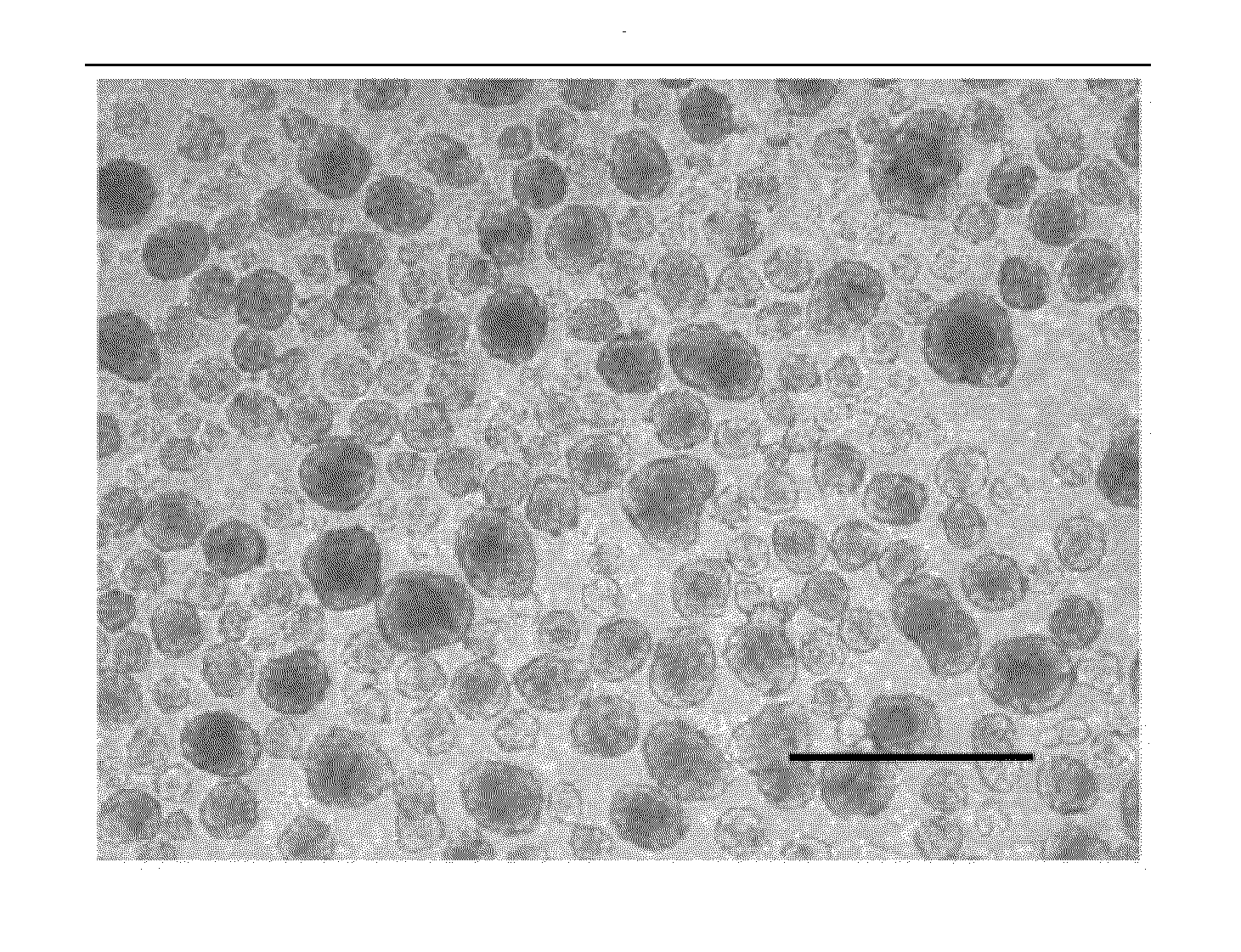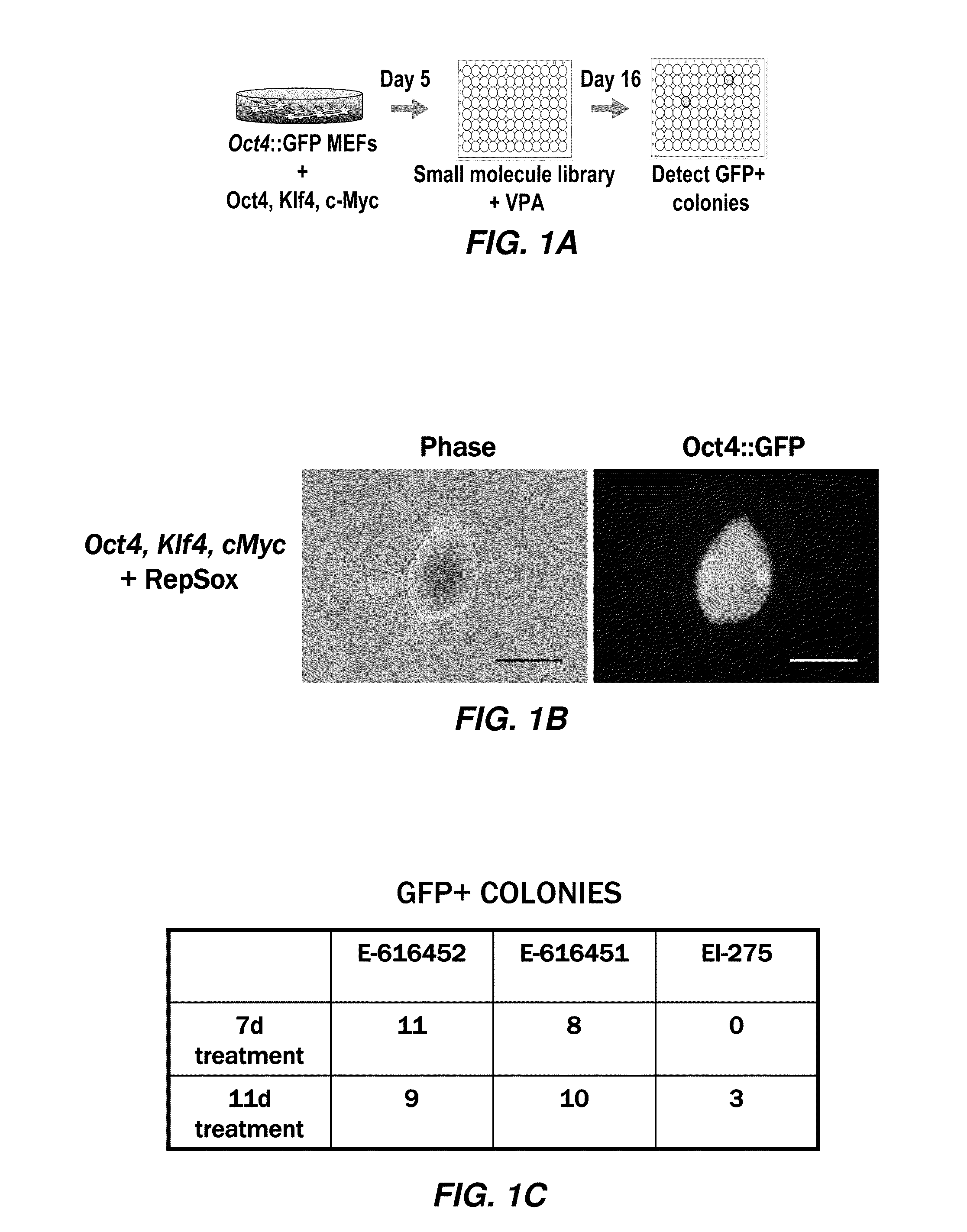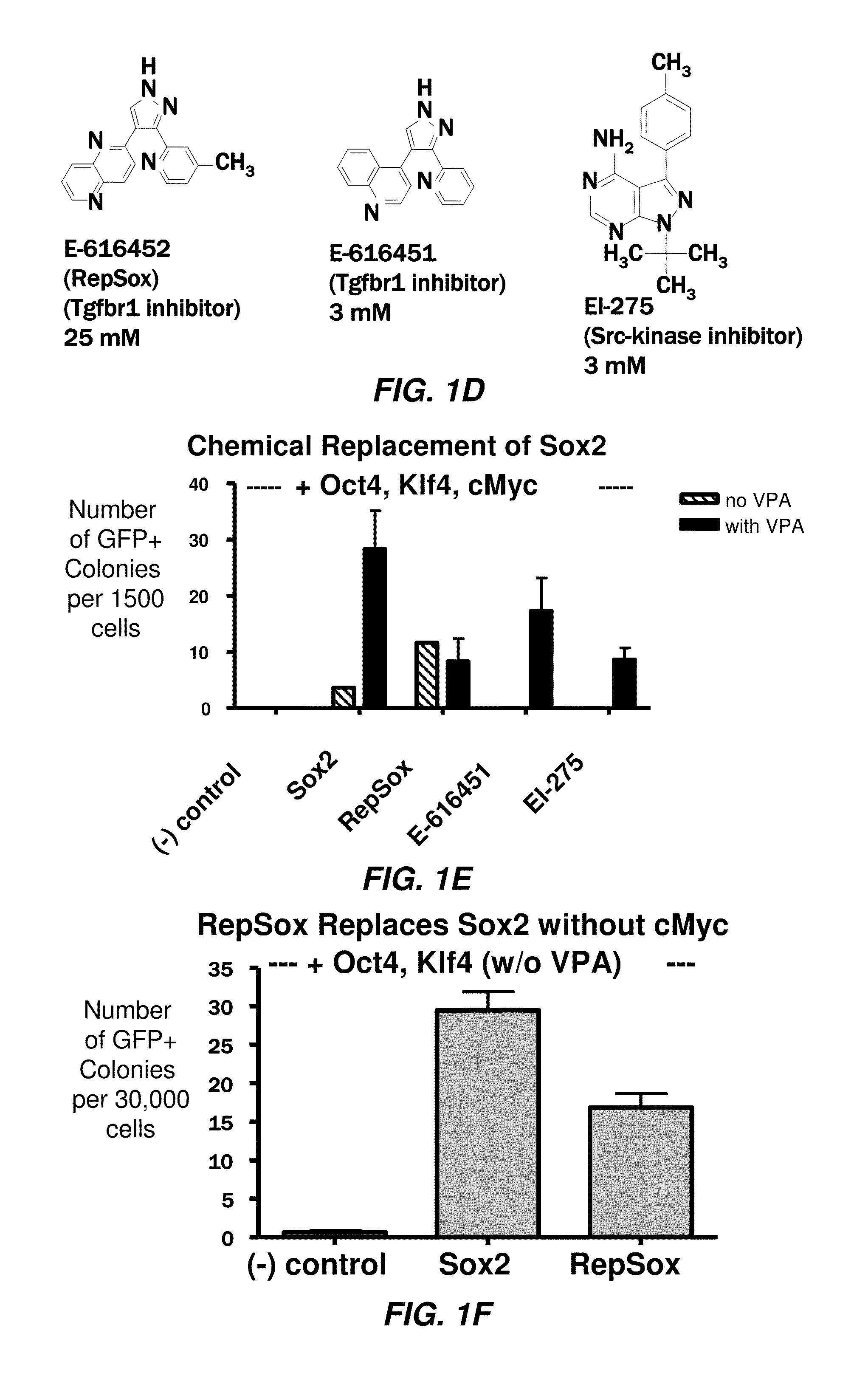Efficient induction of pluripotent stem cells using small molecule compounds
- Summary
- Abstract
- Description
- Claims
- Application Information
AI Technical Summary
Benefits of technology
Problems solved by technology
Method used
Image
Examples
example 1
[1794]A Screen for Chemical Mediators of Reprogramming. In order to identify small molecules that function in reprogramming, the inventors transduced fibroblasts with viral vectors encoding Oct4, Klf4, and cMyc and then screened for compounds that allowed reprogramming to proceed in the absence of Sox2. This approach prevented bias with respect to the mechanism by which a given chemical functioned. In this sense, the approach used by the inventors is similar to a chemical genetic screen that would not only deliver chemical compounds with translational utility, but is useful to provide novel insights into the pathways and mechanisms controlling reprogramming.
[1795]Activation of an Oct4::GFP reporter gene and formation of colonies with an ES cell morphology has previously been demonstrated to be a stringent assay for reprogramming (23). Furthermore, it has been shown that supplementing the culture medium with VPA can improve reprogramming efficiency (24). In mES culture medium supplem...
example 2
Efficient Small Molecule Replacement of Sox2
[1797]Next, the inventors optimized the effective concentration for each molecule (FIG. 7A-7C) and quantified the efficiency at which each of the hit compounds synergized with VPA to replace Sox2. When 1500 MEFs were transduced with only Oct4, Klf4, and cMyc and then treated with VPA, no GFP+colonies were observed (FIG. 1E). However, the addition of E-616452 (Repsox) (25 μM), E-616451 (3 μM), or EI-275 (3 μM), led to the formation of GFP+colonies with an ES cell morphology at a rate that was comparable to normal retroviral transduction with Sox2 (FIG. 1E).
[1798]Since the three compounds were identified in the presence of VPA, the inventors next determined whether these molecules were dependent on this HDAC inhibitor for their reprogramming activities. The inventors determined that E-616451 and EI-275 could not induce the appearance of GFP+colonies in the absence of VPA (FIG. 1E), while E-616452 could do so and at a rate that was similar to...
example 3
RepSox-reprogrammed cells are iPS cells
[1801]Investigation of self-renewal capacity, gene expression program, and pluripotency demonstrated that Oct4::GFP+ cells induced by the RepSox replacement of Sox2 were bona fide iPS cells. The inventors demonstrated that a RepSox-reprogrammed cell line self-renewed for more than 10 passages with a growth rate similar to that of mES cells, while maintaining a mES cell-like morphology and expression of the Oct4::GFP transgene (An Oct4::GFP+iPS line that was derived from a culture of RepSox treated Oct4, Klf4, and cMyc-infected MEFs (OKM+RepSox line 1) displays the characteristic mES-like morphology and self-renewal properties—data not shown). PCR with primers specific to the Oct4, Klf4, cMyc, and Sox2 transgenes confirmed that this cell line did not harbor transgenic Sox2 (FIG. 8). Chromosomal analysis indicated it was karyotypically normal (FIG. 9). Antibody staining revealed that the Oct4::GFP positive cells co-expressed the endogenous allele...
PUM
 Login to View More
Login to View More Abstract
Description
Claims
Application Information
 Login to View More
Login to View More - R&D
- Intellectual Property
- Life Sciences
- Materials
- Tech Scout
- Unparalleled Data Quality
- Higher Quality Content
- 60% Fewer Hallucinations
Browse by: Latest US Patents, China's latest patents, Technical Efficacy Thesaurus, Application Domain, Technology Topic, Popular Technical Reports.
© 2025 PatSnap. All rights reserved.Legal|Privacy policy|Modern Slavery Act Transparency Statement|Sitemap|About US| Contact US: help@patsnap.com



